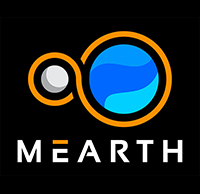Short Paper #1 raised the question of how capital-intensive efforts involving many different actors can be synchronized and aligned over a long enough period to realize any kind of success. The existence of intermediate payoffs—returns generated from Intellectual Property, licensing, technological innovation, and so forth—can be used as a mechanism to coordinate actions over an indefinite period of time. However, the question still remains whether they can be sufficient by themselves to adequately compensate participants. Intermediate payoffs may serve as a hedge on failure, but they will not necessarily cover the total investment made. How should a potential investor look at this scenario?
Estimating Returns
A large part of the problem revolves around the difficulty of estimating the potential return of Project Moon Hut. This is just as true for a firm trying to develop useful new technology, a philanthropist investing for cause, or a strictly financial investor looking for the best return on his principal. It is very hard to form expectations of a return in a project that 1) has long time horizons, 2) involves many different actors for success, and 3) has unlimited upside and potential. Nor does the participation of other actors give any hints: the lack of a natural pricing mechanism makes any bets placed on the ultimate success of Project Moon Hut inherently speculative. From an investor’s point of view, it is therefore natural to be leery that enthusiasm by other actors will cause commitments to Project Moon Hut to be overvalued.
This is only a problem if we try to estimate the long-term valuation as a single, one-time payoff. If instead, however, we model it as a series of compounding intermediate payoffs, we can dynamically model the risk on an initial investment. Because the future value of investments in Project Moon Hut will derive from the size and strength of the network created under its aegis, we can use this as a proxy for changing odds of success over time.
Metcalfe’s Law tells us that the value of a network is proportional to the square of the number of nodes:
An individual participant within the network can assume that his revenues generated within the network are proportional to the overall number of contributing nodes, to a first approximation (. This allows the participant to estimate the growth of the network based on the growth of his own revenues:
This alone does not allow us to estimate the size of the network, but it does allow us to compare
growth in consecutive years or quarters. If estimated growth in V is increasing (
), then that is a
sign that the network itself is growing at a healthy rate. In other words, intermediate payoffs
themselves are a demand signal for the entire network.
This is only a baseline estimate, of course, and leaves out important factors such as an individual
firm’s share of the network and the increasing value of individual contacts; it is entirely possible
for an individual firm to experience growth while the overall market remains stagnant. However,
comparing values for many different participants can give a rough idea of growth prospects.
Forecasting Network Growth
Any projections of future revenues will necessarily be based on forecasts of the overall network size and value. This is the hardest to gauge, as network effects are highly non-linear: ultimate success depends on creating a densely-connected network of innovators, manufacturers, financiers, and other types of actors.
A useful model for this sort of ecosystem is the internet. It is not an industry as such, but rather an ecosystem built around a particular geography (cyberspace, as opposed to outer space). Its true value does not lie in the first-order effects of individual connections, but on the technologies and partnerships built on top of it, multiplied many times over by the network effect.
Any such upside potential also brings with it the risk of wild overvaluation, however, akin to the dot-com bubble. This could present a first-mover disadvantage that makes companies hesitant to make the necessary initial investments. It is therefore worth looking at the dynamics of the dot-com bubble to assess the risks to any investor in Project Moon Hut.
There were, broadly speaking, three different types of investments: 1) speculative bets on e-commerce (i.e. the dot-coms themselves), 2) speculative bets on the fiber optics needed for internet infrastructure (i.e. bets on future demand generated by growth in the dot-coms), and 3) infrastructure investment by established telecoms companies.
The first two categories saw large numbers of bankruptcies owing to large near-term bets anticipating specific growth rates. The third type, however, largely established telecoms companies like Cisco, came off much better. Although they saw a decline in ROI, they continued to make money through the entire crash. This positioned them to profit from the streaming and social media revolutions in the 2010s, built atop the fiber-optic cables laid in the late 1990s and early 2000s. It was the enduring value of infrastructure, in other words, that allowed them profit.
The ecosystem formed around Project Moon Hut is not fated to see a major boom-and-bust, but it offers participants the opportunity to shield themselves from any such occurrence. There are a few major points to draw from this:
- Because the value of MearthLink is largely infrastructural in the broad sense (partnerships, technology licensing, etc.), it is robust to short-term crashes.
- The value for Mearth Space Industries Corporation, as a design, build, lease, manage is purely infrastructural akin to building roads or powerplants.
- The purpose of Mearth Discovery is to take IP that is unused, underutilized, and newly-developed, and bring that to novel markets.
- Aided by Mearth Magic (which brings together immersive and experiential technology ranging from books to gaming to AR/VR, and helps to facilitate the adoption of new innovations).
- The pattern of network growth offers a means to estimate fundamental value and thereby hedge risk.
Companies can thereby expose themselves to an unlimited upside while covering the downside, making investment in PMH much safer and more attractive. Even if this does not realize PMH’s desired outcome, it offers the potential to create lasting value in many other respects.

